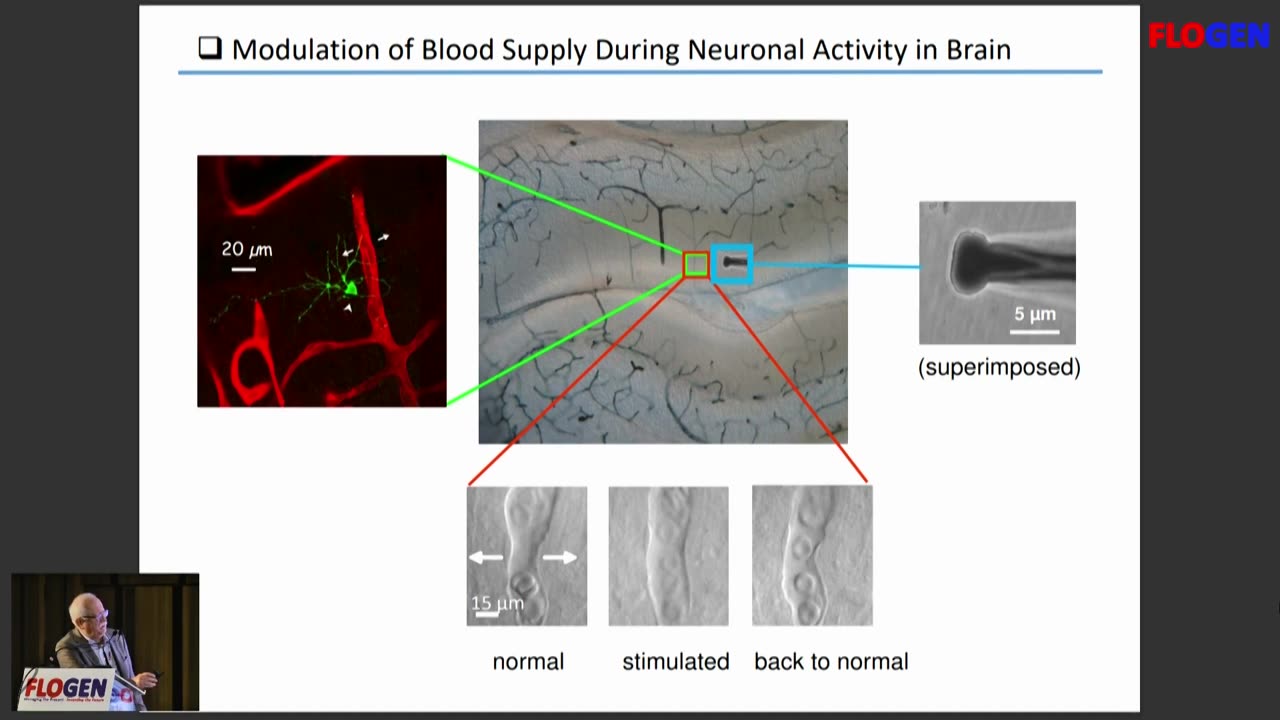Premium Only Content

Prof. Christian Andre Amatore @ FLOGEN SIPS 2022 Yoshikawa Intl. Symposium on Oxidative Stress #1
FLOGEN SIPS 2022: Yoshikawa International Symposium on Oxidative Stress for Sustainable Development of Human Beings (2nd international Symposium)
Presenter:
Prof. Christian Andre Amatore, CNRS & PSL, French Academy of Sciences, Paris, France
Title:
Understanding Oxidative Stress in Brain with Ultramicroelectrodes: Implications for a Possible Mechanism of Alzheimer Disease
Abstract
Oxidative stress is an essential metabolic outcome in aerobic organisms due to the activity of mitochondria in providing the basic energy of cells or during the operation of several enzymatic pools. It also serves to regulate the size and shape of organs or restructure them during foetal development by apoptosis. Oxidative stress is also indispensable to the immune system by allowing macrophages to eliminate virus, bacteria and impaired or dead cells through phagocytosis [1]. In fact, no aerobic organism could live without oxidative stress, a fact that explains why evolution maintained such unsafe mechanisms in aerobic organisms. Though, they are associated to highly negative issues. Indeed, oxidative stress mechanisms provide a variety of life-harmful radicals and species called generically Reactive Oxygen Species (ROS) and Reactive Nitrogen Species (RNS) whose fluxes need to be finely controlled to avoid the destruction of most organic molecules (e.g., lipids in cell membranes, enzymes, etc.) and biological ones (DNA, proteins, etc.) in cells. Thus, under normal conditions, a panoply of antioxidants and enzymatic systems ensures a fine homeostatic balance. However, rupture of this delicate balance is frequent and may provoke severe damages leading to human pathologies (aging, cancers, AIDS, hearth and brain strokes, Parkinson and Alzheimer’ diseases, etc.). Using platinized carbon fiber ultramicroelectrodes we could establish that the composition of the primary oxidative stress in macrophages [1,2] and characterize the nature of functional hyperemia in the brain.3 This led us to formulate an alternative hypothesis about the onset of Alzheimer disease when Amyloid-β and ascorbate molecules are present [4,5].
References:
1. K. Hu, Y. Li, S.A. Rotenberg, C. Amatore, M.V. Mirkin. J. Am. Chem. Soc., 141, 2019, 4564-4568.
2. C Amatore, S. Arbault, M. Guille, F. Lemaître. Chem. Rev., 108, 2008, 2585–2621.
3. C. Amatore, S. Arbault, C. Bouton, K. Coffi, J.-C. Drapier, H. Ghandour, Y. Tong. ChemBioChem, 7, 2006, 653-661.
4. R. Giacovazzi, I. Ciofini, L. Rao, C. Adamo, C. Amatore, Phys. Chem. Phys. Chem. (PCCP), 16, 2014, 10169-10174.
5. L. Lai, C. Zhao, M. Su, X. Li, X. Liu, H. Jiang, C. Amatore, X.M. Wang. Biomater. Sc., 4, 2016, 1085-1091.
-
 18:38
18:38
VSiNLive
2 days agoProfessional Gambler Steve Fezzik LOVES this UNDERVALUED Point Spread!
140K17 -
 LIVE
LIVE
Right Side Broadcasting Network
10 days agoLIVE REPLAY: President Donald J. Trump Keynotes TPUSA’s AmFest 2024 Conference - 12/22/24
2,820 watching -
 4:31
4:31
CoachTY
1 day ago $28.15 earnedCOINBASE AND DESCI !!!!
184K11 -
 10:02
10:02
MichaelBisping
1 day agoBISPING: "Was FURY ROBBED?!" | Oleksandr Usyk vs Tyson Fury 2 INSTANT REACTION
104K14 -
 8:08
8:08
Guns & Gadgets 2nd Amendment News
2 days ago16 States Join Forces To Sue Firearm Manufacturers Out of Business - 1st Target = GLOCK
126K91 -
 10:17
10:17
Dermatologist Dr. Dustin Portela
2 days ago $19.15 earnedOlay Cleansing Melts: Dermatologist's Honest Review
161K14 -
 1:02:20
1:02:20
Trumpet Daily
2 days ago $50.77 earnedObama’s Fake World Comes Crashing Down - Trumpet Daily | Dec. 20, 2024
116K71 -
 6:29
6:29
BIG NEM
1 day agoCultivating God Mode: Ancient Taoist NoFap Practices
83.8K21 -
 30:53
30:53
Uncommon Sense In Current Times
2 days ago $12.05 earned"Pardon or Peril? How Biden’s Clemency Actions Could Backfire"
93.9K10 -
 40:01
40:01
CarlCrusher
1 day agoSkinwalker Encounters in the Haunted Canyons of Magic Mesa - ep 4
85.5K10